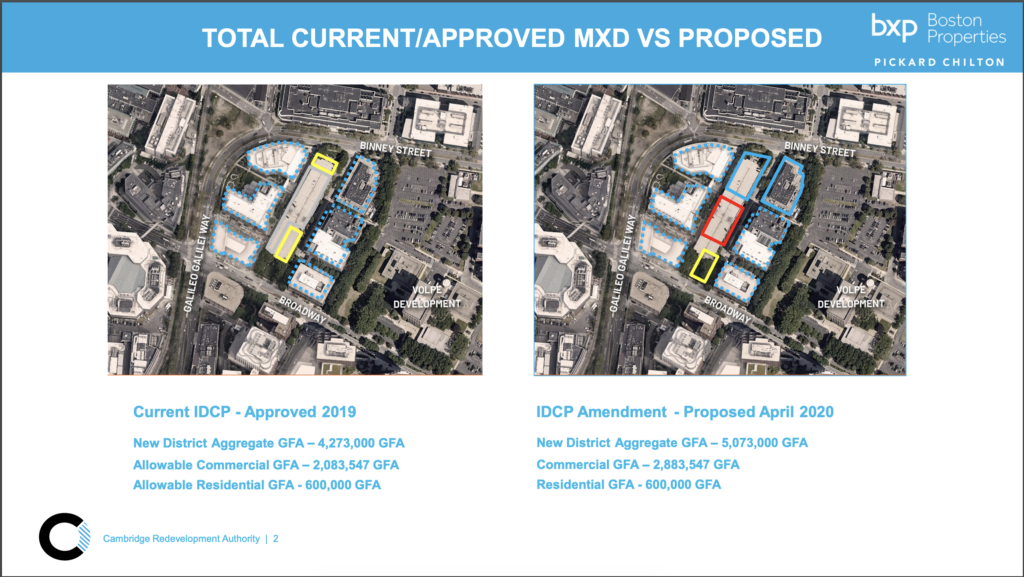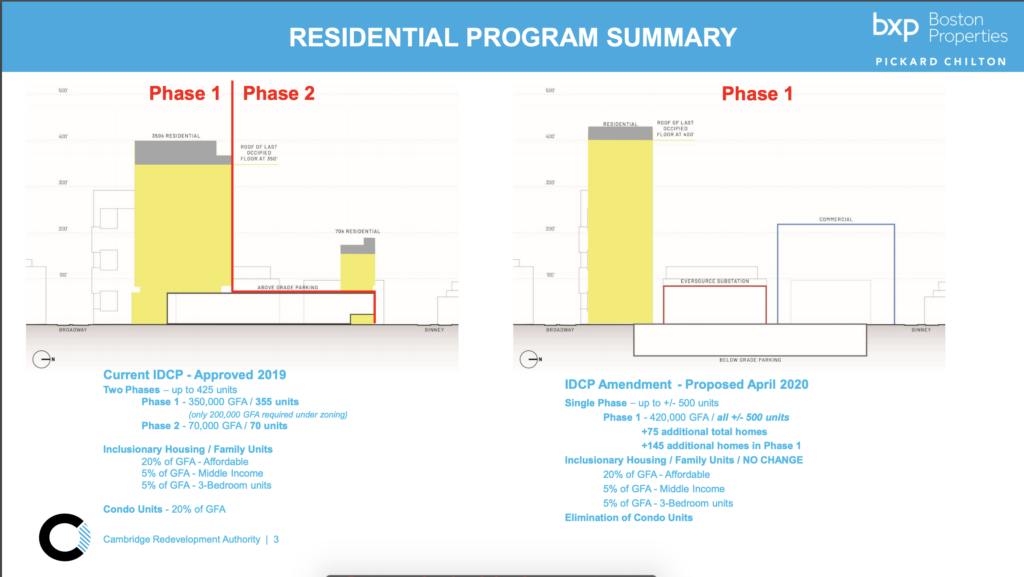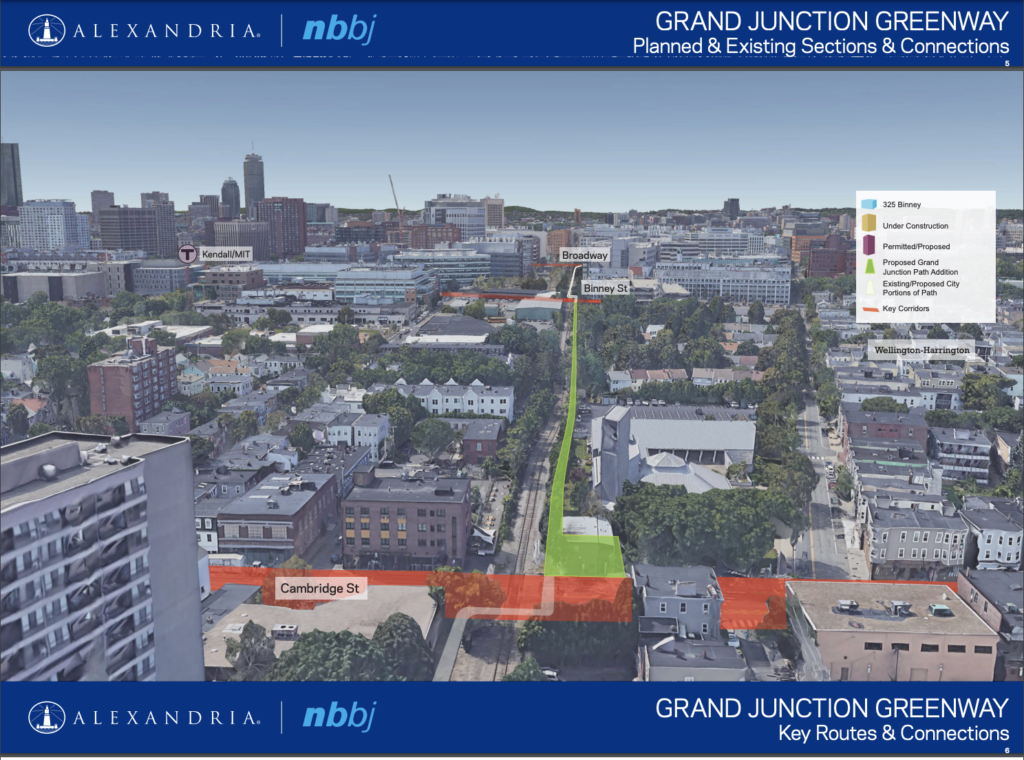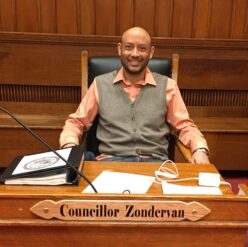Note from Q: This is the first in a series of progress updates that my office had begun preparing before the COVID-19 pandemic hit. While these updates document progress on non-COVID issues in anticipation of getting back to work on them, my office remains extensively focused on the emergency response at this time.
After almost a year of opposition, negotiation, and suspense, we finally have some clarity on the future of the proposed Fulkerson Street substation. Part 1 (from last November) is a quick read with key background information if you need to get caught up.
In response to growing electricity demand created by all the growth in Kendall Square, Eversource proposed a massive substation on Fulkerson Street in East Cambridge. With 34 building projects already permitted or under construction in Kendall Square, and electric load already reaching 98% of capacity at peak usage times during Summer 2018, there was complete agreement that something had to be done. But powering our commercial real estate growth in Kendall Square with a substation situated in the adjacent residential neighborhood of East Cambridge, directly across from the Kennedy-Longfellow school and a playing field, is simply unacceptable, particularly as the site was originally intended to be housing.
It just so happened that Alexandria Real Estate had already submitted a zoning petition for the neighboring parcel, the former site of the Metropolitan Pipe Company at the corner of Fulkerson and Binney. Alexandria sought significant zoning relief, asking for almost twice the amount of square footage allowable under the existing zoning, exclusively for biotech & lab space. Recognizing the leverage this created, I urged my colleagues to hold off on approving Alexandria’s upzoning unless and until Eversource agreed to put the substation elsewhere.

The council’s willingness to hold out created an opening for the city to broker a negotiation between Eversource, Alexandria, and other developers in the Kendall Square area.
The council was finally presented with some details of a negotiated deal at a March 2, 2020 hearing. Boston Properties has agreed in principle to incorporate the substation into an already-planned development at the site of the Blue Garage (290 Binney). In exchange, they will be asking to construct an additional 800,000 square feet of commercial space at the site, through a future upzoning. The existing garage will be knocked down and moved underground. The Cambridge Redevelopment Authority (CRA) is leading the process and design of the new development at 290 Binney, which will ultimately require council approval.
The new location for the substation is much more suitable, and this plan frees up the Fulkerson Street parcel for affordable housing & open space. An excessive amount of commercial space was already in the cards at 290 Binney Street, but the new proposal consolidates the housing component into a single phase, from two, thereby reducing uncertainty around its completion. 25% of the housing will be income-restricted, and the new proposal eliminates a provision that would have required 20% to be condo units. This keeps the focus on adding to our rental housing stock, which is a higher priority.


I generally vote against entirely commercial, non-net zero upzonings like the one proposed by Alexandria for the former Met Pipe site.
The additional 800,000 square feet is a steep tradeoff. The Alexandria and Blue Garage projects combined will add more than three million square feet of commercial space, in addition to the nearly two million coming next door at the Volpe parcel.
This astronomical commercial growth exacerbates our city’s housing affordability crisis and accelerates the need for even more grid infrastructure. We got into this mess because we didn’t have a plan, yet we just keep barrelling ahead. And on top of it all, the language in the Eversource letter is very tentative. Should the deal fall through for any reason, the utility would almost certainly go back to their original plan to build on Fulkerson Street.
In order to complete the Grand Junction multi-use path all the way from Binney Street to Cambridge Street, Alexandria purchased the remaining land alongside the railroad tracks and offered it to the city. This is the primary community benefit offered in exchange for their zoning relief. It shouldn’t have taken a massive upzoning to complete this path, but I am excited about the safe connectivity that it will bring to our neighborhood and our city.
For these reasons, despite my significant reservations, this ended up being an offer the council could not refuse. In particular, I considered:
- the extraordinary circumstances around the negotiation
- the clear consensus within the neighborhood in support of this deal
- Our likely inability to block Eversource from moving ahead with a substation on Fulkerson Street if they went for state approval.

By the time Boston Properties made their offer, we really had no other choice.
But it didn’t have to be that way: early on in the discussions, I urged the city and the utility to consider non-wires alternatives instead of building a massive substation. The Brooklyn-Queens Demand Management Project allowed New York’s ConEdison to avoid building a 1.2 billion dollar substation a few years ago through a combination of solar, batteries, and better demand management. If New York can avoid building this infrastructure, why can’t we even consider it? But Eversource was never really interested in that approach, and I never got a straight answer to my questions about alternatives.
Even if we were to build these many millions of square feet all-electric, which may yet happen given the rapid evolution in building technology & codes, it would still require additional grid electricity. Tall buildings in northern climates cannot generate enough solar energy to offset consumption without it. So, we still don’t have a plan for how to build all these buildings without adding to our climate emissions, and we seem to be unwilling to consider alternative approaches that have been demonstrably successful in cities much larger than our own. Meanwhile, Eversource continues to impose unwelcome substations on neighborhoods all over the region, including right now in East Boston.
Neighbors and cycling activists remained united throughout the process, despite much excitement over the prospect of completing the Grand Junction path between Binney and Cambridge Street.
I want to thank everyone who recognized that by standing together, we could get both the Grand Junction AND an alternative site for the substation. Councillor Carlone was instrumental in facilitating dialogue between all of these parties, especially between Alexandria and the neighbors. Former Vice Mayor Jan Devereux called the series of committee hearings that made space for this conversation to take shape. The City Manager deserves credit for hearing the Council and putting a top negotiator in charge of quickly finding a suitable parcel within the load pocket that checks Eversource’s many boxes. (Bob Reardon, the former city assessor, was brought out of retirement to get the job done!)
Despite the steep price and my lingering concerns about this deal, it is a great and rare victory for the residents of East Cambridge and Wellington-Harrington. I live in this neighborhood, and I want to thank my neighbors for their tireless and excellent advocacy. They and cycling advocates remained united in asking for more throughout the process, despite immense excitement over the prospect of completing the Grand Junction path between Binney and Cambridge Street. I don’t know that this has ever been done before in the history of modern utility construction; certainly Eversource couldn’t think of a precedent where they moved a substation in response to local opposition.
Going forward, I will insist that neighbors remain involved as this process continues to unfold, and I will do everything possible to minimize the impact of the Blue Garage development on our community. I will work with Eversource and the city on more proactive planning of our electrical needs, including the consideration of non-wires alternatives that may accommodate additional growth without creating more demand on the grid. A strict limit on demand growth would encourage the uptake of such strategies. We can’t forget about this now that the proposed substation has a new home, or else we will be right back in this difficult position in another few short years. Finally, we need to stand in solidarity with neighboring communities that are also fighting unwelcome substations, especially working-class communities like East Boston. Check out the excellent op-ed from Boston City Councilor Lydia Edwards that has more information about that situation.
